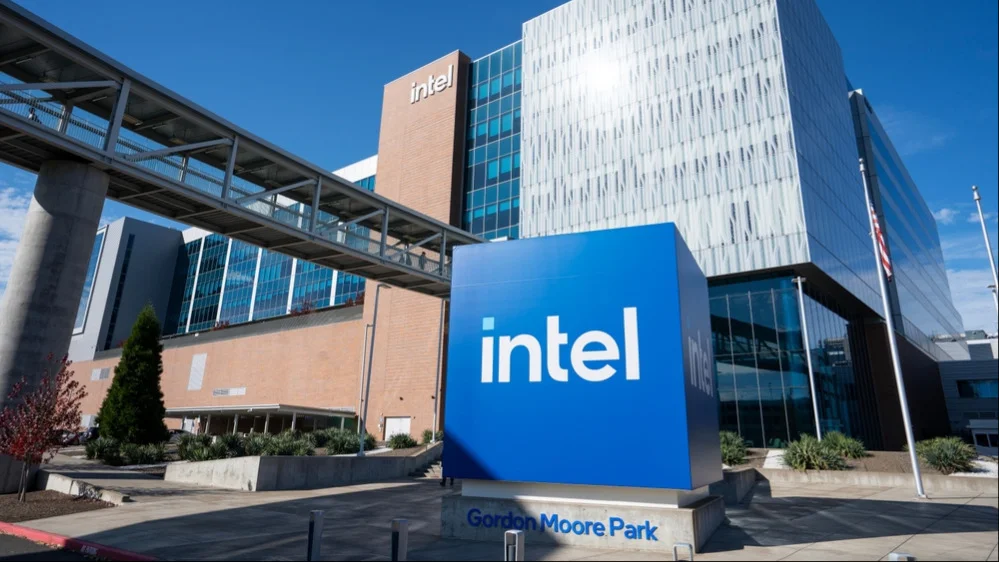Intel is having trouble creating a new chip. It is important to compete with TSMC
The share of defect-free processors is still only 10%, although mass production is scheduled for the fourth quarter

Intel's new chip-making technology, in which the company has invested billions of dollars, has run into quality problems: it threatens profits from the production of an important new processor, wrote Reuters. Intel had hoped the processor would help it secure chip production contracts and impose competition on Taiwan's TSMC. The company still expects to ramp up processor output this year, but Reuters' sources have doubts that the plans are feasible.
Details
Intel's 18A chip manufacturing process, for which the company had high hopes, has encountered a serious obstacle - a high scrap rate. This was reported by Reuters, citing two sources.
This process, Intel hoped, would open the door to third-party manufacturing contracts and restore its position in the market for producing technologically advanced and high-margin chips. The company plans to begin mass production of new laptop processors Panther Lake processors using the 18A process in the fourth quarter. However, poor product quality is preventing Intel from scaling production. According to Reuters' sources, only a small fraction of those chips have been good enough to ship to customers. By the summer of 2025, that share had reached about 10%, according to one of the agency's interlocutors. Until the company improves the efficiency ratio in chip production, it will not be able to increase their output, and thus make them profitable in the near future, Reuters writes.
Intel Chief Financial Officer David Zinzner, however, did not confirm the 10 percent figure: yield (yield) is "better than that," he said in a July 24 conversation with Reuters, but did not give specific numbers. Intel declined to provide that data to the agency. "We expect yield to improve every month, and by the end of the year reach levels suitable for Panther Lake mass production launch," Zinsner said. - But even at these levels, it's too early to talk about high margins - we have further improvement to make."
Intel claimed in a July 30 statement that Panther Lake is "fully on schedule," but did not specify at what yield level the chips would become profitable.
Why it's important
Intel hoped that the new process technology and the successful release of Panther Lake would help it attract outside interest in its contract chip business and help it impose competition on the current market leader, Taiwan's TSMC, Reuters noted. Intel has been promising investors for months to ramp up chip production using the new process. The company has invested billions of dollars in the development of 18A, investing in the construction and modernization of several fabs, the agency wrote.
But now profits are under threat. According to Reuters, in the past Intel has started mass production only after yield rises above 50%, and the chipmaker starts to make its main profit only when it reaches the 70-80% level. The large number of defects in a chip as small as Panther Lake makes it difficult to sell, three Reuters sources said. Two people familiar with the state of Intel's manufacturing operations say that dramatically raising yield levels in time for Panther Lake's fourth-quarter launch will be extremely difficult. And without that spurt, Intel may have to sell chips at low margins or even at a loss, the sources warned.
At the moment, Intel is still partially dependent on TSMC to produce its own chips, the agency states. Earlier Intel explicitly warned: if it fails to get external orders for production on the next process - 14A, which is the successor to 18A - the company may leave the segment of advanced contract manufacturing completely, recalls Reuters.
How's the company doing
Intel on July 25 published a stronger-than-Wall Street expected revenue forecast for the current quarter. However, the earnings outlook was less optimistic - the company expects to just come in at zero. Meanwhile, Intel is forecasting demand for PC and laptop processors to rise because of President Donald Trump's duties, with PC makers building up inventories before the new levies are imposed.
In the second quarter, Intel's net loss widened 80% year-over-year to $2.9 billion, or $0.67 per share. The company explained that the EPS numbers were not comparable to analysts' expectations due to a one-time $800 million amortization adjustment related to "redundant non-reusable equipment." That adjustment reduced bottom-line EPS by about 20 cents, noted CNBC.
This article was AI-translated and verified by a human editor
